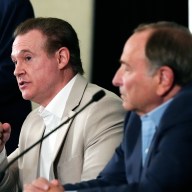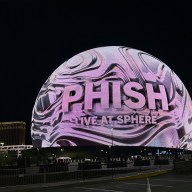Watching the moody 2013 indie crime drama “Ain’t Them Bodies Saints,” you probably wouldn’t say, “The guy who made this should make a Disney movie about a flying, green monster.” And yet that’s what happened. Director David Lowery wound up going to the big leagues with “Pete’s Dragon,” which is not only a very, very loose take on the 1977 Disney original; it’s also an atypically modest and intimate summer movie. In Lowery’s latest, young Oakes Fegley plays an orphan mostly raised in the deep woods with his giant winged pal. The cast includes names like Bryce Dallas Howard and Robert Redford, and yet it still has the hand-made feel of an indie, not a soulless blockbuster. (Lowery will repeat the process by next tackling “Peter Pan.”) We talked to the filmmaker, 35, about how, even with some special effects, hitting the big leagues wasn’t a total gear-shift. I don’t want to assume making a big studio film was much different than making an indie, especially if it’s this modest. How did it feel for you? RELATED: Review: “Pete’s Dragon” is more wonderful than we perhaps deserve What about graduating to directing a big special effect as well as your actors? That’s interesting. How was it specifically for you, dealing with mostly one big effect, i.e., the dragon. The hard thing to do is when you’re shooting on a green screen, which we had to do sometimes. You’ve got to figure out where you are in that space. That is tricky. On one hand it’s something I hope I can get better at in the future; on the other, it’s something I hope I don’t have to do, because I like to shoot in the real world. With this movie I tried to shoot everything in the real world, but every now and then we had to use a green screen. What about helping the child actors respond to — and even have a deep friendship with — when what on set is sometimes just a tennis ball on a stick? But that’s not the case. They still have the capacity to imagine and to believe in something that’s not there and to do so convincingly. The kids were so good that it helped the entire crew understand the movie we were making. It helped us frame the dragon better because we were able to see what the kids were doing and how they were interacting with him. We could understand the emotional tonality of the movie, because they convinced us so thoroughly there was a dragon right there. That is very refreshing that kids can still do that. I was worried they’d be lost in gadgets and gizmos. Perhaps the younger generation will be more advanced mentally than we are. RELATED: Interview: Seth Rogen on what food he’d eat in “Sausage Party” Was keeping the film so small partly so you could make the leap to big budgets with more ease? I should ask: Why “Pete’s Dragon”? Did they approach your or did you approach them?
You know, it didn’t end up feeling different. I was expecting there to be that moment where you think, “Oh, now I’m making a big studio movie.” And that never actually happened. It was exactly the same experience; it just lasted longer. [Laughs] You have a lot more time for prep — that’s always a good thing. And then you have a much longer shoot, which is also a good thing, though it also wears you down. And then there was 13 months in post-production, which was a bizarre experience for me. To focus on one thing for that long, that was new to me. I’m a short-attention span kind of person. I remember thinking in the fourth week of prep, “I’m going to be focusing on this project for a year-and-a-half to two years.”
I think that filmmakers of my generation and especially generations after me will have a much better facility for that kind of thing because they’ve watched behind-the-scenes documentaries on DVDs. That was certainly the case for me. I was so familiar with how that stuff is done because I watched all these “Lord of the Rings” documentaries on the special editions, which totaled about 14 hours.
You show up [on set] knowing you’ll be framing for something that’s not there. You point the camera and you might have a tennis ball on a stick or maybe a giant inflatable creature that’s roughly the size of your dragon. And then you have to work with the human actors, to make sure they’re responding appropriately to what’s not there. But that’s not that tricky.
I’m going to throw that entirely into the “Oakes is an amazing actor” category. [Laughs] I knew we needed a child who could sustain that sort of communication with something that’s not there. It really comes down to imagination. Luckily that’s something kids have a lot of. I was a little worried, though. I had a lot of imagination, but kids these days, who have iPads and things I didn’t have at their age — you think, ‘Is there a deficit of imagination?’
They have multitudes. Because as soon as we’d yell “cut” they’d get their iPads out and play video games. We had six kids, and they all became a team of best friends who were all competing on some iPad game I’d never heard of. But when they had to return to the scene, they’d switch whatever switch was inside their head that allows them to believe in magic. It was fantastic.
I totally believe that. I totally believe their brains are developing in a way that will vastly exceed whatever we’re capable of as millennials.
That definitely helped. I really wanted to keep this grounded, keep this intimate. It doesn’t really cover that much ground. The story basically takes place over 24 hours and in not that many locations. I wanted the climax of the movie to be the same scale as what might be, in another summer blockbuster, the opening set piece. I really wanted to spend a lot of time in the beginning with the kid and the dragon in the woods. If we hang out with them and not really rush the movie towards some sort of breathless conclusion, then we’d have something that was not only narratively engaging but also unique in its sense of scale and pace and narrative drive. That helped keep me grounded. If I was trying to make something bigger in its scope and which had far more grandiosity or cacophony or fire and brimstone and buildings falling down and the world being threatened by thousands of dragons — which is a direction this certainly could have gone — I would have certainly been more adrift and lost. And I wouldn’t have been as interested.
It was neither. Over the course of making [“Ain’t Them Bodies Saints”], I gained an agent, who became not just a great business partner but a friend and confidant. At that stage he would send me projects the studios wanted to make or were interested in — just to gauge my taste. And I would say no to everything. “Pete’s Dragon” was one of them and he said the studio was interesting in making it but they only wanted to use the title. I thought to myself, ‘Why not? Why not tell a story about a boy and a dragon? I could do that.’ All of my films involve children. All of my films include this sense of wonder. They also involved kids who don’t want to grow up. And I love family films. I was very excited by the idea not because it was “Pete’s Dragon” but because it opened a door to making the kind of family film I wanted to make.
David Lowery on ‘Pete’s Dragon’ and how today’s kids are scary smart

Getty Images
Follow Matt Prigge on Twitter @mattprigge


















